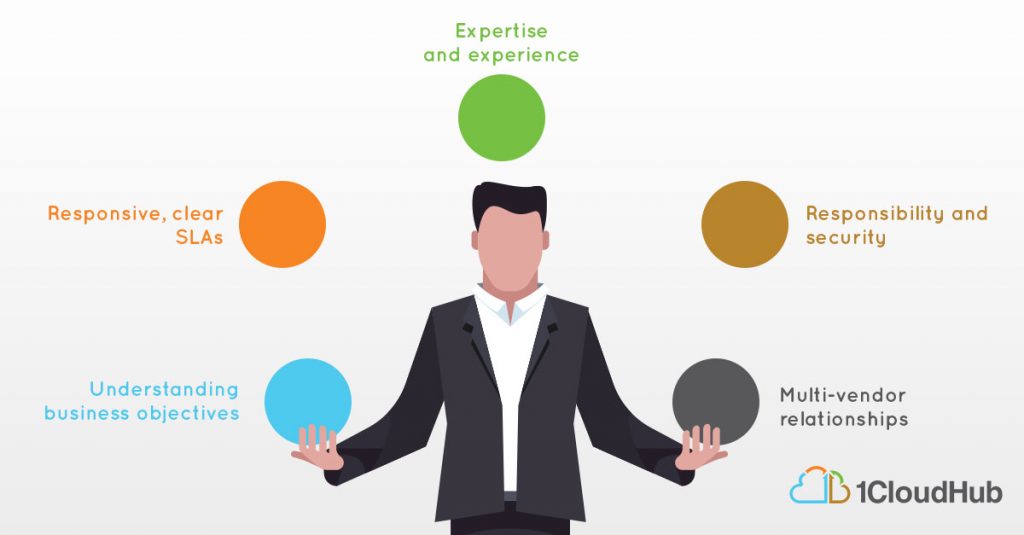Migrating to the cloud: Choosing the right cloud partner
Not all cloud platforms are the same. Not all cloud providers are the same. With the right partner, you can tell the difference and make the right choice.
Think about this: What would be the cost of a failed migration to the cloud?
Now, what would be the opportunity cost?
The cost of making a failed or an incomplete migration to the cloud can be very high. Depending on the criticality of the application/data you’re migrating, this can even cripple your business.
So, it’s vital that you get your cloud migration right, the first time. Doing so would almost entirely depend on your cloud partner.
With the right partner to support you, you can avoid shooting in the dark, exhausting yourself with extended timelines and ending up with sub-optimal outcome. With the right partner, you can focus on your business, while they take care of your technological foundation.
Are you ready for the cloud?

Before you set out to do anything, it is critical that you first understand your specific business needs. This may sound quite obvious, but clarifying your specific requirements and minimum expectations before assessing providers ensures you are gauging them against your requirement checklist, instead of arbitrarily comparing one against the other. This is the quickest way to shortlist potential providers.
Now the question arises – how do you decide who is the right cloud partner for you? Here are some common areas to focus on when assessing a cloud service provider.
Understanding business objectives
Many cloud partners (cloud system integrators) may boast technological expertise but the right partner needs to align with your business needs and goals. If you are targeting speed and agility, reachability, scalability, availability and wider coverage, cost savings, and effective resource utilization for your business, then cloud is the way for you.
But each of these goals may mean different things to different customer groups. Your cloud partner needs to be one who understands what ‘cost savings’ means to you. And for that, they need to understand your business, industry, geography and ethos. Also partners must help you understand the order of priority among the needs and goals. Meaning when push comes to shove, which ones are the key goals that must be achieved in a sequence that is aligned with your business goals and with manageable risks.
Responsive, clear SLAs
Check for early signs. Obviously, you need to know if the cloud partner (cloud system integrator) is responsive before you begin a partnership. You could conduct a research to find out about the company’s reputation, say by reading online reviews, message-boards and blogs, and examining any case studies and testimonials available on the company’s website.
You should look for a clear definition of the service and deliverables. Complicated service level agreements (SLA) or a lack it indicate a lack of processes and control, which will certainly hamper service delivery later.
A strong SLA should specify how issues will be identified and resolved, by whom and in what time period. It should indicate their working relationship with the cloud platform. It should also outline the compensation available and the processes for logging and claiming, listing gaps and warnings in the scope of the SLA.
Expertise and experience
Look for the frameworks they use, structured processes, effective data management, good knowledge management and service status visibility. Quiz them about their knowledge of industry best practices and compliance.
Also understand how the provider plans to resource and support continuous adherence to these standards. While certifications are important, they need to be backed with on the field experience to be able to solve your business problems.
Responsibility and security
In the cloud world, security is a shared responsibility and a partner needs to have sufficient protocols in place to be able to hold up their end of the bargain. Start by looking to understand the provider’s data loss and breach notification processes and ensure they are aligned with your organisation’s risk appetite and legal or regulatory obligations. Understand the role cloud partner plays in security scenarios from preventive, control and recovery standpoint.
Ensure your existing security policies are mapped into cloud world — if not like-to-like, build equivalent mechanisms, which include aspects of network, platform, host, application, database and storage. Some of them could be extending the on-premise mechanisms into cloud, like anti-virus or anti-malware. Some could be leveraging cloud provider services like DDoS protection, WAF, security groups and subnet isolations. Some others could be to implement virtual application of what you already have on premise to cloud, like Palo-Alto or Sophos or Trend Micro NxtGentFirewall or IPS/IDS solutions.
Multi-vendor relationships
Cloud service providers may have multiple vendor relationships that are important to understand. Knowing your cloud partner’s organization structure and their delivery mechanisms is a key aspect in deciding if a partner will be able to service your needs efficiently. Assessing the potential provider’s relationship with key vendors, their accreditation levels, technical capabilities and staff certifications, is a worthwhile exercise to decide if they support multi-vendor environments and can give good examples.
The absence of a common framework for assessing cloud partners, and the fact that no two partners are the same, complicates the process of selecting one that’s right for your organization. Choose a cloud partner with deep experience across the changing landscape of cloud technology, is certified and has relationships with leaders in the cloud space to power your cloud transformation dream.
To gauge if 1CloudHub is a right fit for you, speak to one of our cloud consultants today.
